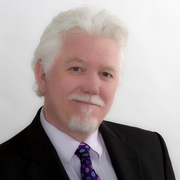Free Play: Emboldened by the Power
By John Henry Ledwith | January 8, 2015
Senior Sales Manager, ETR
Recently I had the interesting experience of hearing Dr. Peter Gray deliver the closing keynote at the Texas State AHPERD (TAHPERD) meeting. This is an annual gathering of the Lone Star state’s physical and health education teachers.
The Texas Association for Health, Physical Education, Recreation and Dance is committed to “the development of knowledge and programs that promote active, healthy lifestyles and enhance skilled, aesthetic motor performance.”
Dr. Gray’s topic was “How Free Play Promotes Children’s Social and Emotional and Intellectual Development." He has long been sounding the alarm about the decline of play and its impact on adolescents. (The Ted Talk video below is highly recommended!)
Means Are More Important Than Ends
The soft-spoken Dr. Gray promotes the importance of play that is self-chosen and self-directed. He tells us play should be motivated by means more than ends. He urges us to allow children to control their own behavior within play, allowing play to be imaginative and creative. He advocates for play that is conducted in a non-stressed frame of mind, with little or no adult control and oversight.
The intriguing thing was that he was saying this to a room full of adults who have committed their professional lives to coaching, training and instructing children to reach a higher level of physical prowess in sports, recreation and dance.
As I looked about and saw what I perceived to be quizzical faces around me, I became increasingly fascinated to see how this presentation would be received. It seemed to me that Dr. Gray was suggesting these educators set aside everything they had been dedicating themselves to in their life’s work.
My Mistake
But I had made a mistake. I was thinking in my “sport mentality.” I’m a father who has coached his own kids’ teams for many different sports, in a variety of community leagues. I’ve worked with children and teens throughout my county. Our focus was on the specific skills they needed to perform at their best in the sport at hand. Drill, drill, drill, evaluate performance, then drill and drill again.
I discovered quickly that this was not the mindset of most of the folks in the room—the true Physical Education professionals. They weren’t perplexed by Dr. Gray’s ideas. They were excited!
Dr. Gray described the power of free play to promote physical, social, moral, emotional and intellectual development. It is these qualities, he told us, that harness the “opportunities to develop creativity, insight and hypothetical thought necessary to stimulate the capacity for learning.”
He also warned that the adult-controlled team style of contemporary “play” could actually be inhibiting the healthy mental and behavioral development of adolescents.
Lighting the Fire
It was a quiet room. But not for long. The conversations that follow the presentation were excited, powerful and—yes—playful!
People were not just looking at the principles of positive coaching—concepts quite familiar to this crowd. They were talking about how to create safe places within the school environment that would both motivate movement and create the social interaction of game-based expression that is free of adult control. (Not, I might add, without the presence of appropriate adult monitoring for safety in the school setting.)
Endless Possibility
I joined one group discussing how we might find and promote what Peter Gray refers to as “flow,” that mental state where a person is fully immersed in the activity and the moment. Yes, that active, non-stressed frame of mind is ideal for learning, creativity and insight within free play. But how, people were asking, can that be blended with their obligation to provide developmentally appropriate physical education?
National standards ask them to offer meaningful, age-appropriate skill and practice opportunities. How will free play contribute to the development of a “physically literate individual” who “demonstrates the knowledge and skills to achieve and maintain a health-enhancing level of physical activity and fitness”?
I found myself in another conversation that brought together Dr. Gray’s premise that play promotes all aspects of a child’s development, and compared it with the underlying principles of the Whole School, Whole Community, Whole Child approach. This model combines and builds on elements of the traditional coordinated school health approach championed for years by Dr. Lloyd Kolby and promoted by ASCD (the Association for Supervision and Curriculum Development).
Going Boldly Forward
I’ve come away from this experience with an emboldened belief that the success and sustainability of a lifelong attachment to health and physical activity can only succeed in schools that apply these free play principles. Let’s create programs that allow for creative expression and open participation of the whole child within a dedicated (and playful) community of health education professionals.
I love this. Game on!!!
John Henry Ledwith is ETR’s Senior Sales Manager. He can be reached at jhl@etr.org. You can also find him on LinkedIn and follow him on Twitter @JohnHenry56.





